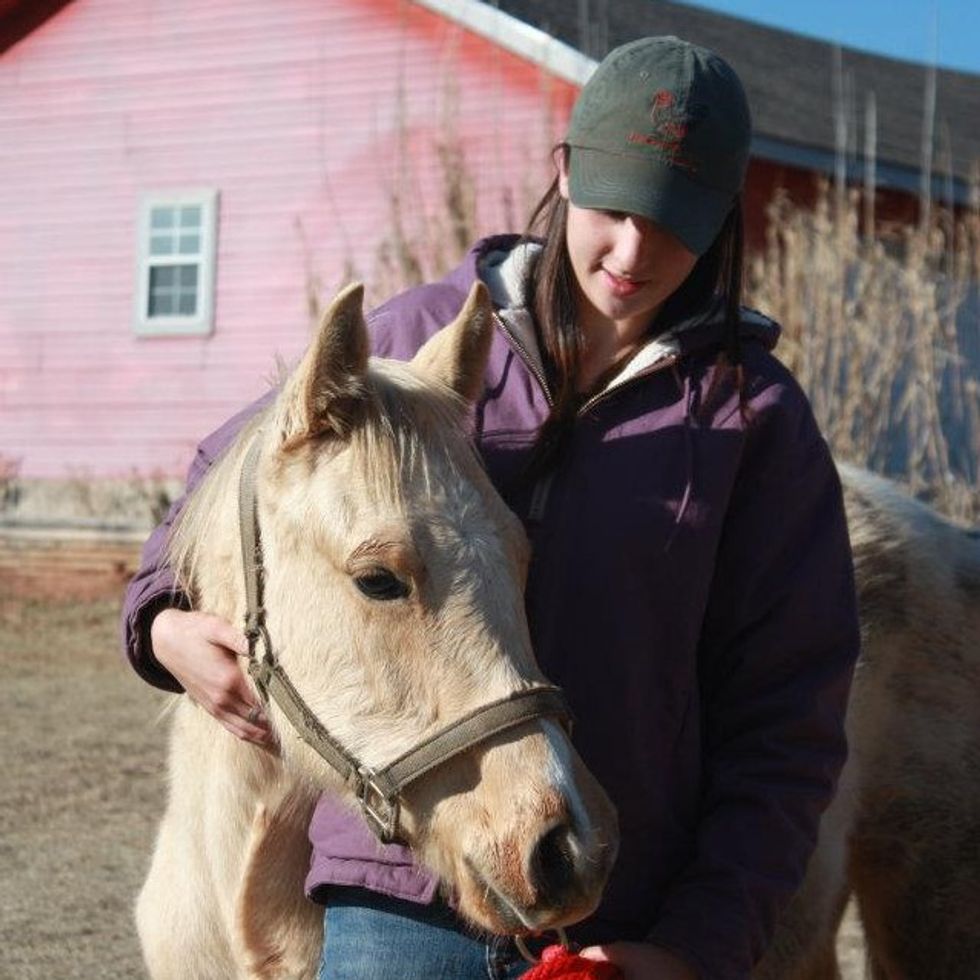This article is for any of you that've ever been confused by the terms "green horse" or "dam-sire." While the first article in this series covered common bovine terms and their definitions, this article will follow with definitions for some common equine terms. First of all, a pony is not a baby horse!
Horse
"Horse" refers to any equine over 14.2hh (hands) tall.
Pony
"Pony" refers only to breeds of equine standing less than 14.2hh at maturity. To "pony" a horse means to lead one horse while riding another horse. Ponying is often part of the training process, when a green horse is ponied by an experienced horse.
Mare
A mare is a mature female equine capable of reproduction.
Stallion/Stud
A stallion or stud refers to an intact mature male equine capable of reproduction.
Gelding
A gelding is a castrated male equine. Male horses are castrated to control reproduction as well as better their disposition. Stud horses are often aggressive while geldings are typically much more docile.
Foal
A foal IS a baby horse! "Foal" refers to an equine under one-year-old of either gender.
Colt
A colt is an intact immature male equine under three-years-old.
Filly
A filly is an immature female equine under three-years-old.
Weanling
A "weanling" refers to a newly weaned young equine of either gender.
Yearling
A yearling is an equine of either gender from 12-to-24-months-old.
Green Horse
A "green horse" refers to a horse with very little training. A green horse is inexperienced and may be flightier than broke horses. A "green broke" horse has been newly started under saddle.
Broke Horse
A "broke horse" refers to a horse that has been fully trained.
Shod
A shod horse is a horse wearing shoes. Horses without shoes maybe referred to as unshod or barefoot.
Bronc
It's not a bronco. It's a bronc. A bronc may refer to an untrained horse likely to buck or more commonly a rough stock horse used in bronc riding rodeo events.
Outlaw
An "outlaw" is a horse that can't be broke to ride.
Broodmare
A broodmare is a mare used for breeding.
Bred Mare
A bred mare is a pregnant mare.
Dam
Dam refers to the mother of a horse. When reading registered horses' papers one would refer to the animal's mother as the dam.
Sire
Sire refers to the stud a horse is out of or the father of a horse. When reading registration paper's the animal's father would be referred to as the sire.
Dam-Sire
"Dam-Sire" or "damsire" refers to the stud that the dam of a horse is out of... In other words, a horse's maternal grandfather.
Easy-Keeper
An easy keeper is a horse that is easy to maintain. Easy keepers stay in good shape without extra supplements or strict exercise routines.
Hard-Doer/Poor-Doer
A hard-doer or poor-doer is the opposite of an easy-keeper. These horses are often underweight even while on a diet typically adequate for a horse of their age and size. They require extra supplements and care to keep them in healthy shape.
Hands
Hands (hh) are the units used to measure horse height. One hand is 4 inches. Height is measured from the top of the horse's withers to the ground. Ponies, equine under 14.2hh at maturity, are measured in inches rather than hands.
Now that you have the horse talk basics, we can get into the interesting stuff like types of horses, training practices, coat colors and markings, types of tack, and more. If you have questions, shoot me a message on Facebook or comment on the article. I'll answer those questions in upcoming articles. What terms did I leave out? Do these definitions differ in your part of the country? Let's swap experience and talk horses!

















